#artist is william blake richmond
Text

Venus and Anchises by William Blake Richmond (1889-90)
#william blake richmond#art#paintings#fine art#19th century#19th century art#academism#academicism#academic art#painting#english artist#british artist#mythology#greek mythology#greek goddess#venus#aphrodite#anchises#classic art
1K notes
·
View notes
Text
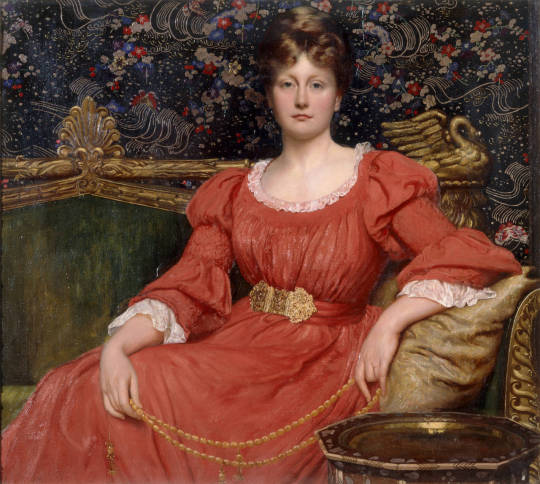
William Blake Richmond (British/English, 1842-1921) • Mrs Luke Ionides (1848-1929) • 1882 • Virginia & Albert Museum, London
#art#painting#fine art#art history#aesthetic movement#art for art's sake#portrait#female portrait#society portrait#british/english artist#oil painting#artwork#v & a#william blake richmond#pagan sphinx art blog#art blogs#art lovers on tumblr
34 notes
·
View notes
Text

MWW Artwork of the Day (12/6/23)
William Blake Richmond (British, 1842–1921)
Youth (c. 1905-10)
Stained glass window
Holy Trinity Church, London
This is one of the three large windows that Richmond designed in the Lady Chapel of Holy Trinity Sloane Street, London. Richmond collaborated with Harry James Powell of James Powell and Sons, glassmakers, in developing new colours for the mosaic glass to be installed in St. Paul's Cathedral. The new colors and combinations of those colours began to be offered in the standard Powell glass palette from the early 1890s. The expanded glass selection inspired artists in the early stages of the Arts and Crafts Movement. The new, heavier glass, often with light streaks of colour was used by artists in newly commissioned stained glass windows and decorative work.
7 notes
·
View notes
Note
Character ask: Aphrodite
Favorite thing about them: She's a fascinating figure, full of potential for stories: a stunningly, irresistibly beautiful goddess who embodies romantic love and sexuality, who can be cruel and kind in equal measure, just like love itself. It's no wonder that she's captivated writers and artists for centuries.
Least favorite thing about them: As I said above, she can be cruel: for example, in her treatment of Psyche, and her role in starting the Trojan War. Of course this is true for most of the Greek gods and goddesses, not just her.
Three things I have in common with them:
*I'm passionate.
*I love romance (in stories, at least) and visual beauty.
*I can be hot-tempered and petty sometimes.
Three things I don't have in common with them:
*I'm not irresistibly alluring to men.
*I don't take vicious offense when people consider other women more beautiful than I am.
*Unlike her traditional depiction, I'm not blonde.
Favorite line: I'd need to read through all the various mythology sources to find one.
brOTP: Her son Eros, when she's not abusing his future wife Psyche.
OTP: Her various famous lovers (Ares, Anchises, Adonis), and in some modern retellings, her husband Hephaestus.
nOTP: Any of her own children, or anyone she's put a curse on.
Random headcanon: If there's a place where the gods and goddesses of different cultures can meet, then when she visits that place, I'm sure she enjoys lording her fame over other love-goddesses like Inanna and Freya. None of them embody love and beauty throughout Western art and popular culture the way she does.
Unpopular opinion: I'm not sure how to feel about the traditional portrayal of her marriage to Hephaestus, or about revisionist versions thereof. On the one hand, I understand the urge to deconstruct the tradition of "beautiful goddess despises her ugly husband and has affairs willy-nilly with handsomer gods and men." By pure instinct, I like seeing them reimagined as a happily married couple. But at the same time, I think of all the discourse surrounding the Hades and Persephone myth, and apply the same thoughts here. Arguably, the fact that Aphrodite is forced into a loveless marriage reflects the experience of most women in ancient Greece, and the fact that she does have affairs willy-nilly – and that she's the goddess of love but not of marriage – reflects the separation between marriage and love in ancient Greek culture. Ultimately, I'm open to both types of retelling, just like I'm open both to "happily married Persephone" and "unhappily married Persephone" in portrayals of the Underworld.
Song I associate with them: None.
Favorite picture of them:
The Aphrodite of Knidos:
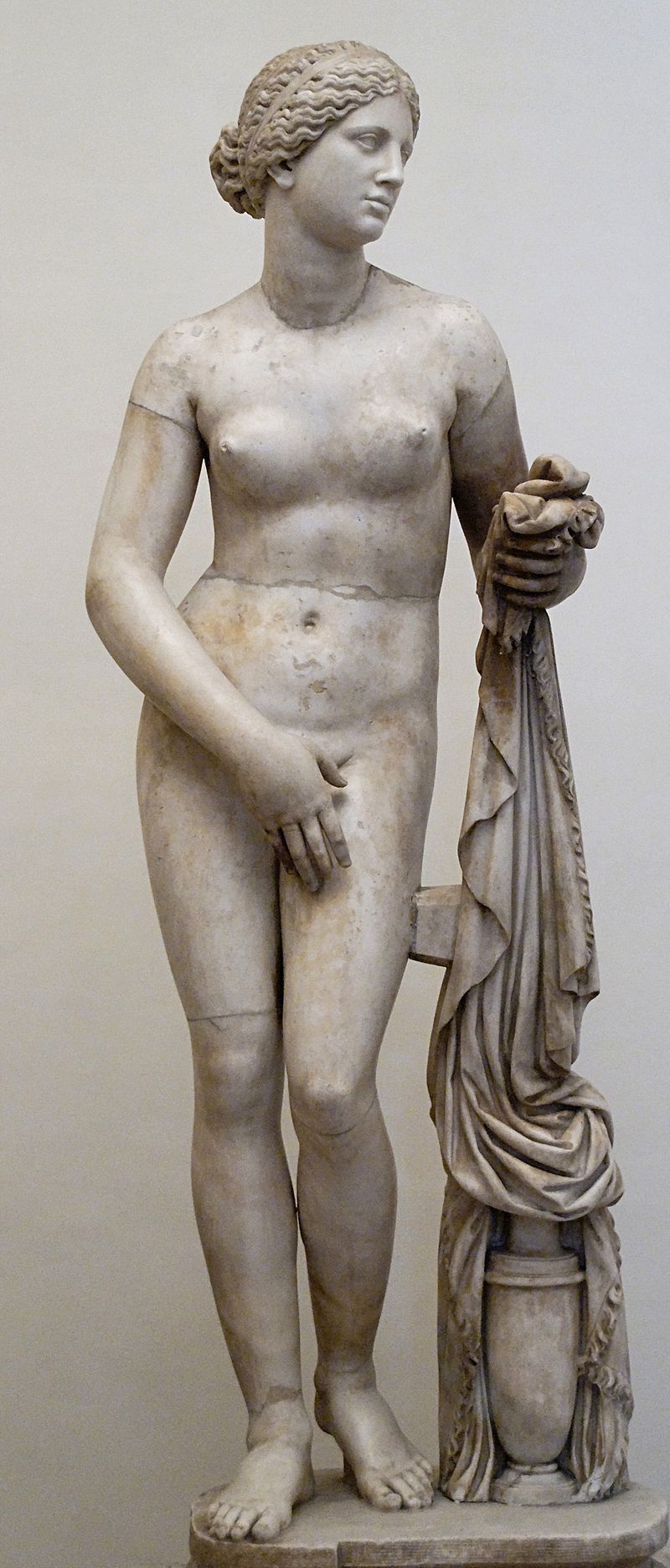
The Aphrodite of Milos, or as it's better known in pop culture, the Venus de Milo:
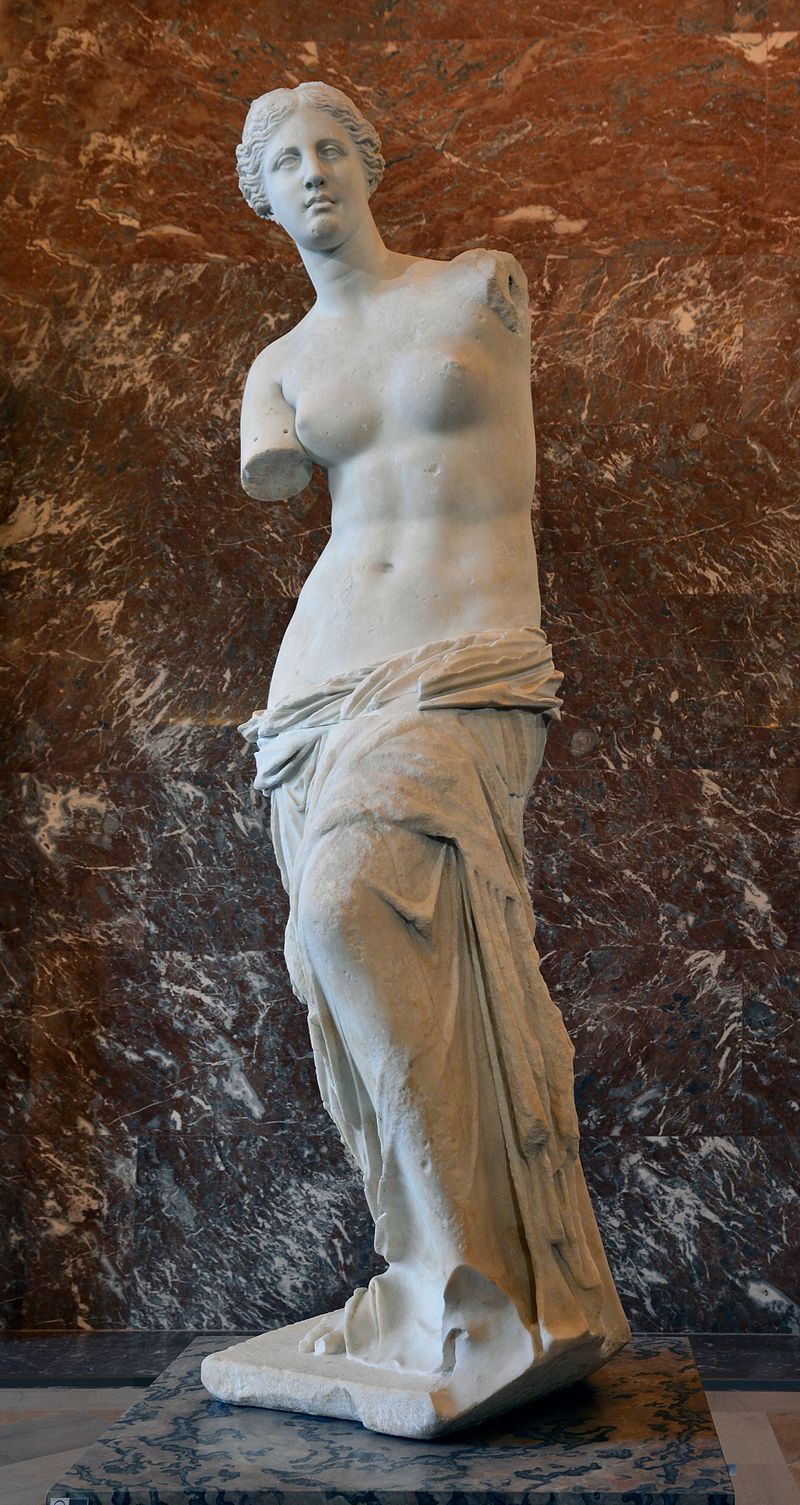
Sandro Botticelli's The Birth of Venus:
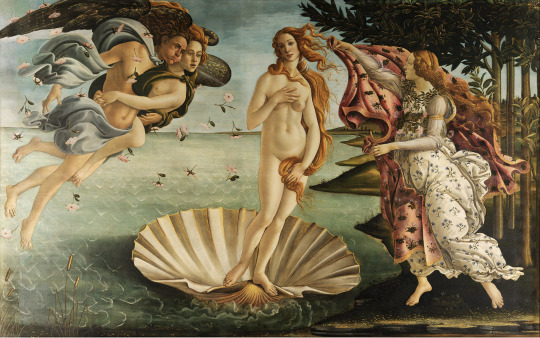
Alexandre Cabanel's The Birth of Venus:

The Sleeping Venus by Giorgione and Titian:

Titian's Venus of Urbino, assuming she really is the goddess and not just a courtesan:

Titian's Venus with a Mirror:

Jacques-Louis David's Mars Being Disarmed by Venus:

William Blake Richmond's Venus and Anchises:

This illustration of her birth from D'Aulaire's Book of Greek Myths:

Marilee Heyer's illustration of her birth from Doris Orgel's book We Goddesses:

Aphrodite as she appears in Disney's Hercules – not high art, but she is cute:

19 notes
·
View notes
Text

'Orpheus returning from the Shades', c.1885 by Sir William Blake Richmond (1842–1921). British painter, sculptor, stained glass and mosaic artist. Royal Academy of Arts. oil on canvas
90 notes
·
View notes
Text
Identity Artist Research Report - Samuel Palmer
The artist Samuel Palmer was a London-born artist. He was an artist in the 18th century during the peak of the Romanticism era in Britain, Within his life Samuel Palmer focused largely on landscapes. In some articles on this artist, even refers to him when talking about national identity. Sometimes his works are even referred to in visions as well as being idyllic (Samuel Palmer, 2005). He had a large number of well-known influences, for example, William Blake, Samuel Palmer was also involved in groups related to William Blake.
At the point when Samuel Palmer was creating artworks, we were very much still in the romanticism era, this is very prominent within his work as the colours used often create the type of atmosphere expected during this period of time. This atmosphere was also carried into the names of his artworks for example “Golden Valleys” Gold usually being associated with Wealth, Love, Happiness, and many other often joyful ideas, This in many ways sets a theme for all the art that Samuel Palmer Creates. “Palmer was a key figure in Romanticism and produced visionary pastoral paintings”(Samuel Palmer, 2005). Samuel Palmer often worked on landscapes as a painter (oil and watercolors), etcher, and printmaker, in addition to being an artist “he was a prolific writer” (Tate, n.d.).
Returning to the Idea of National identity, That appears to be a very large title to be working under. In regards to this, it means the atmosphere within the artworks, The weather conditions. Sometimes these weather conditions are called ‘Perpetual Downpour’, or ‘Late Twilight’ (Samuel Palmer, 2005) in regards to British weather this can be very fitting with the identity that most people give the United Kingdom as being known for the bad rainy weather all year round. This identity in many ways describes the career which Samuel Palmer is associated with.
`
Returning to the topic of key influences, One of Samuel Palmer's main influences was another painter of the Romanticism era ‘William Blake’ (Samuel Palmer, 2005). “Samuel Palmer met William Blake in the October of 1824, As one of his main influences this had a large impact on the art he produced” (Samuel Palmer, 2005 pg 18). A group was formed containing Edward Calvert and George Richmond and many more artists this group was known as ‘The Ancients’ (Samuel Palmer, 2005 pg 18)
To conclude the work of Samuel Palmer can be seen as a part of many different movements with influences from a large number of well-known artists. The artists he used as influence massively influenced and changed his work and styles. He worked and created during a very interesting time for British art.
Reference List
Britannica, (n.d.), Samuel Palmer British Painter, Etching | Intaglio, Relief & Aquatint | Britannica .
Historic UK, Jessica Brain, (n.d.) William Blake, https://www.historic-uk.com/CultureUK/William-Blake/ .
Tate, (n.d.), Samuel Palmer 1805 - 1881, Samuel Palmer 1805–1881 | Tate .
Timothy Wilcox, (August, 2005) Samuel Palmer, British Artists, Tate Publishing.
0 notes
Text
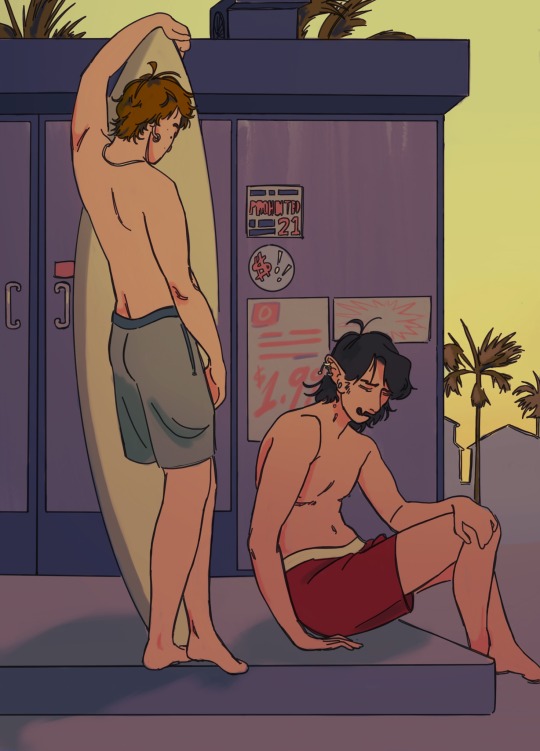

idiot’s lament
aka dylan crying at 6 am referenced from a crop of Electra at the Tomb of Agamemnon by William Blake Richmond (1874)
#dylan morella#tommy le#artists on tumblr#redraw#william blake richmond#digital art#my art#ocs#original character#aesthetic art#character design#classical art#man i dont know
3 notes
·
View notes
Photo


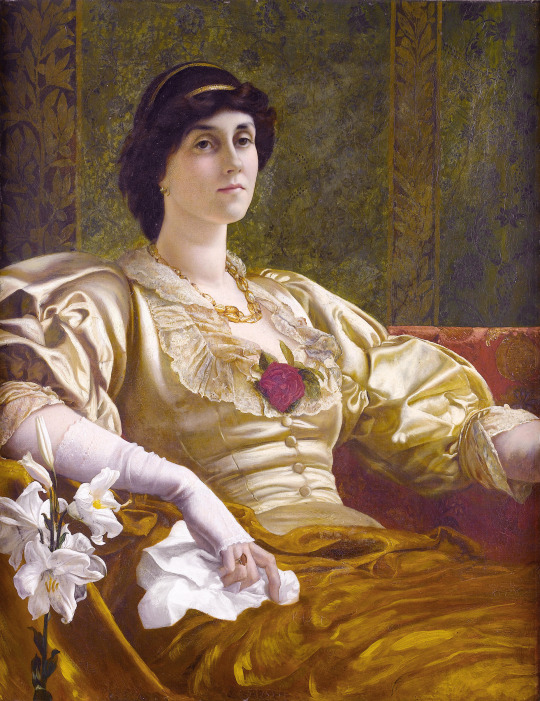



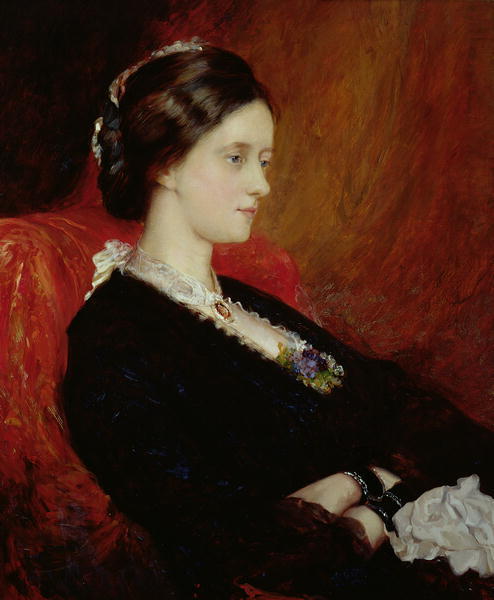



Sir William Blake Richmond
1 note
·
View note
Text
art honoring Hermes
here's the third set in the series i'm doing on art honoring the gods as i finish my art history degree; Apollon and Artemis can be found under these links. here are my favorite pieces honoring Hermes :>
Disclaimer: Most artists throughout the neoclassical period (in particular, but not limited to) used Hermes/Mercury interchangeably for a myriad of cultural and religious reasons. I do understand that Hermes and Mercury are syncretized deities with very different aspects in Greek and Roman society respectively.

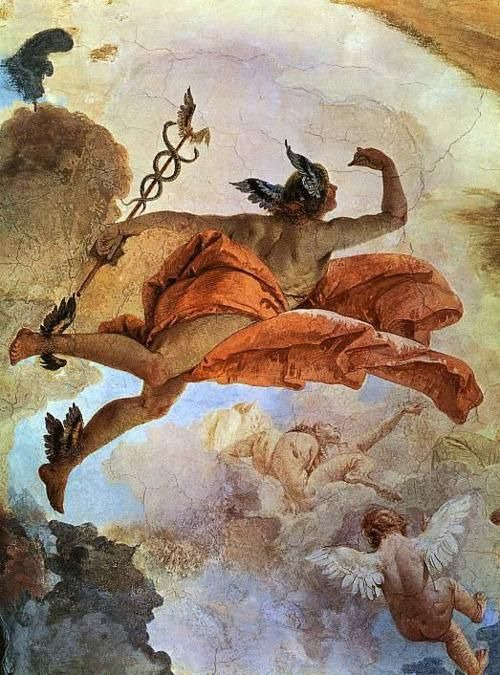
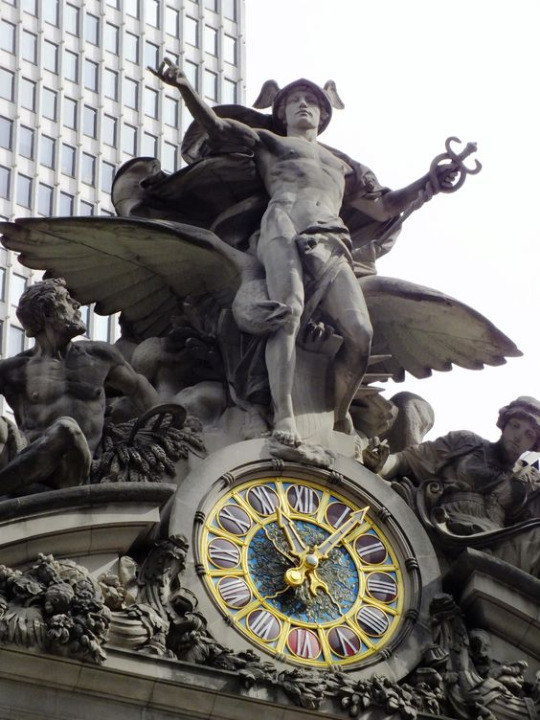
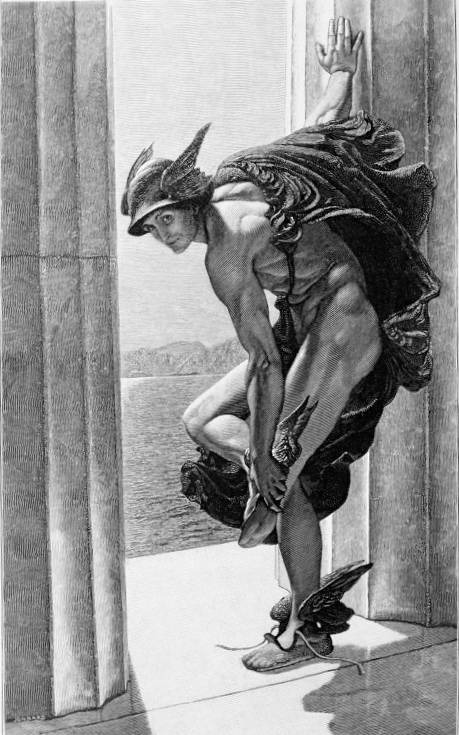




In order: 1) Souls on the Banks of the Acheron by Adolph Hiremy-Hirschl, 1898, Belvedere Palace, Vienna. 2) Detail from Palazzo Clerici Ceiling Fresco by Giovanni Battista Tiepolo, 1740, Milan. 3) Hermes (Engraving) by William Blake Richmond, 1866, University of Toronto Library. 4) Mercury Attaching his Wings by Jean-Baptiste Pigalle, c. 1744, on display in the Louvre, Paris. 5) Hermes by Jules Alexis Coulan, 1914, Grand Central Station. 6) Elevation of the Great Elector to Olympus by Charles-Amedee-Philippe van Loo, 1751, City Palace, Potsdam, Germany. 7) Detail from Mercury Exhorting Aeneas to Leave Carthage by Giovanni Battista Tiepolo, 1757, Palazzina di Caccia, Stupinigi. 8) Mercury and Psyche by Reinhold, 1857, Staatliche Museum, Berlin.
#hermes#mercury#the old gods#art history#helpol#hellenic paganism#hellenism#hellenic polytheism#hellenic gods#hellenic reconstructionism#greek gods#greek polytheism#greek myth#greek mythology#sculpture#paintings#oil painting#hellenic polythiest#aeneas#psyche
473 notes
·
View notes
Note
What was the deal with aesthetic dress reform and how is it different from normal Belle Epoque fashion?
So I actually had to go to Wikipedia about this, because while I knew the rough basics about Artistic/Aesthetic Dress- medieval inspiration, loose silhouettes, interconnected with the Pre-Raphaelites, purporting to improve on various aspects of women’s fashion depending on who you asked -I didn’t know the specifics myself.
It seems like how much it was about reform could vary wildly. In a lot of ways it reminds me of modern historybounding/vintage fashion, albeit with less research done into the actual time period it was kind of referencing. There was kind of this idea of hearkening back to the sartorial Good Old Days of natural-dyed colors, hand-embroidery, emphasis on individual craftsmanship, and loose, flowing silhouettes. The reform in question almost seems to have been more aesthetic than practical, much of the time.
(It seems to have almost had some Regency influences at times, which is really interesting considering that Regency was still recent enough to potentially fall under “Great-Grandma’s clothes” rather than “artistic and ancient.” And the idea of wearing old clothes wasn’t socially popular, as I’ve mentioned before.)
As for the differences...I can think of no better illustration than this painting from 1881:

(Detail from “A Private Viewing At the Royal Academy.” William Powell Frith, 1881. He’s contrasted Artistic Dress fashions, at left and right, with popular styles of the day, center. Honestly I think the corseting on the Popular Fashion contingent is exaggerated and the Artistic Dress women look more like photographs of average 1880s ladies in terms of waist size. But it’s a satire, so I suppose that’s the point.)
As for extant examples, I feel like some ended up looking better than others:

(Tea gown by Liberty of London, 1897. While it’s definitely not conducive to tightlacing, I think the inclusion of a train belies the idea that Artistic Dress was all about making women’s clothing more practical. And I love this gown, to be clear.)

(Dress, also by Liberty of London, 1890s. It’s difficult to imagine the figure that this weird mushroom/muffin-top shape would flatter, and the color definitely isn’t helping.

(”Mrs. Luke Ionides,” by William Blake Richmond, 1882. Another one that I really love.)

(”Symphony in Flesh Color and Pink: Portrait of Mrs. Frances Leyland,” by James McNeill Whistler. 1871-74. She’s making it work, but this really just looks like a nightgown to me. Which seems to be a common issue among many Artistic Dress gowns.)
So yeah. That was a thing. Hope this provides at least a basic, useful primer!
61 notes
·
View notes
Photo

Electra at the Tomb of Agamemnon by William Blake Richmond (1874)
#william blake richmond#art#paintings#fine art#19th century#19th century art#neoclassical#neoclassical art#neoclassicism#english artist#british artist#mythology#greek mythology#greek tragedy#agamemnon#electra#king#princess#painting#classic art
2K notes
·
View notes
Text

THIS WEEK AT KOLAJ MAGAZINE
Hot Sauce Collage & Other Tasty Bits
FROM KOLAJ 32
Hot Sauce Collage!: Simon Blake Directs a Crystal Hot Sauce Campaign
CALL TO ARTISTS
Collage Artist Residency: Money Money
Deadline to apply: May 26, 2021. During this project-driven artist residency, collage artists work together to create a series of collages that illustrate Eleanor H. Porter’s 1918 novel, Oh, Money! Money!. The result will be a book published by Kolaj Institute. The residency is being done in conjunction with “The Money $how” at Saint Kate – The Arts Hotel in Milwaukee, Wisconsin. The book will be released at an event in July. MORE
http://kolajmagazine.com/content/news/collage-artist-residency-money-money/
FROM THE ARTIST DIRECTORY
Intuition & Intentional Order: Melissa Donoho, Kansas City, Missouri, USA.
WORLD COLLAGE DAY
Montevideo, Uruguay: Postales Uruguayas (Uruguayan Postcards)
COLLAGE ON VIEW
Moment/um: Janice McDonald at Spark Gallery in Denver, Colorado
WORLD COLLAGE DAY
Warsaw, Poland: Collage Artist Extravaganza Party
COLLAGE ON VIEW
A Field: Kandis Williams at the Institute for Contemporary Art at Virginia Commonwealth University in Richmond, Virginia, USA
Read the full update
*****************************
Kolaj Magazine, a full color, print magazine, exists to show how the world of collage is rich, layered, and thick with complexity. By remixing history and culture, collage artists forge new thinking. To understand collage is to reshape one's thinking of art history and redefine the canon of visual culture that informs the present.
SUBSCRIBE | CURRENT ISSUE | GET A COPY
SIGN UP TO GET EMAILS
#collage#collageart#collageartist#papercollage#collage art#collage artist#kolajmagazine#contemporary art#painting#artmagazine#art#artist#artpublication
11 notes
·
View notes
Photo
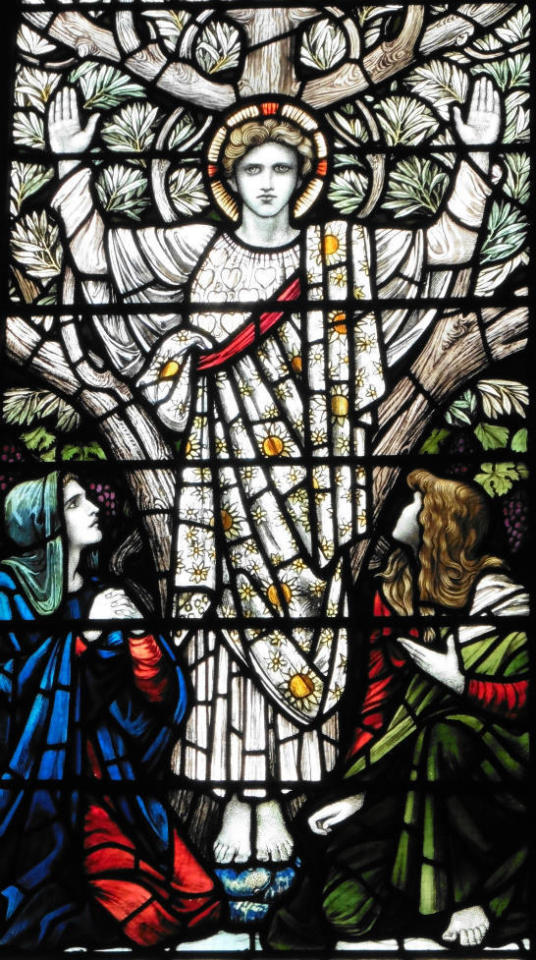
MWW Artwork of the Day (12/27/20)
William Blake Richmond (British, 1842–1921)
Youth (c. 1905-10)
Stained glass winsow
Holy Trinity Church, London
This is one of the three large windows that Richmond designed in the Lady Chapel of Holy Trinity Sloane Street, London. Richmond collaborated with Harry James Powell of James Powell and Sons, glassmakers, in developing new colours for the mosaic glass to be installed in St. Paul's Cathedral. The new colors and combinations of those colours began to be offered in the standard Powell glass palette from the early 1890s. The expanded glass selection inspired artists in the early stages of the Arts and Crafts Movement. The new, heavier glass, often with light streaks of colour was used by artists in newly commissioned stained glass windows and decorative work. (from Wikipedia bio)
29 notes
·
View notes
Photo
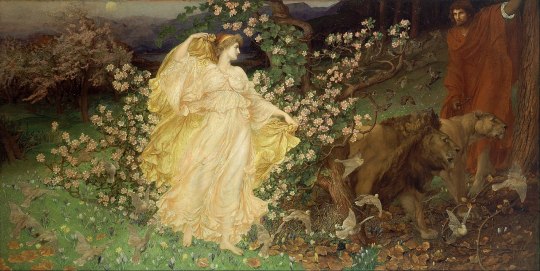
Venus and Anchises [1888-89]
Artist: Sir William Blake Richmond
#arts#roman mythology#greek mythology#legend#venus#aphrodite#anchises#sir william blake richmond#william richmond
45 notes
·
View notes
Photo
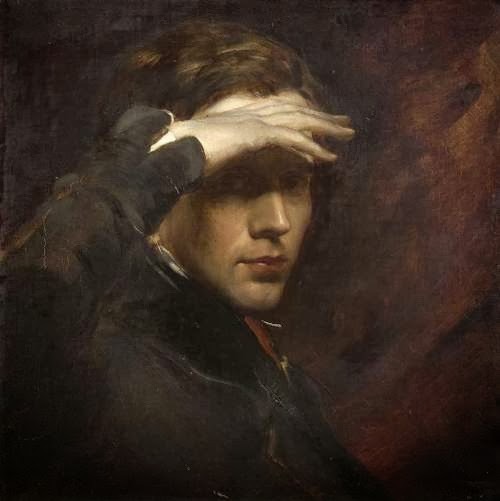
Self-Portrait (1840) by George Richmond
In his youth, George Richmond belonged to a group of young English artists called the Ancients, centered around the art philosophies of William Blake. They produced mostly Biblical and agrarianism themed artworks, but never found much success. In 1828, he went to study art and anatomy in Paris, supporting himself by painting miniatures.
After moving back to England, he met and fell in love with Julia Tatham. Her father forbade their marriage, so the couple eloped to Scotland in 1831. He decided that his best bet for making a living was as a portrait artist, and he produced work over the next 40 years, first mostly in watercolor and crayon, then mostly in oil.
2 notes
·
View notes
Photo

Sir William Blake Richmond charlotte foster the artists wife head study
199 notes
·
View notes